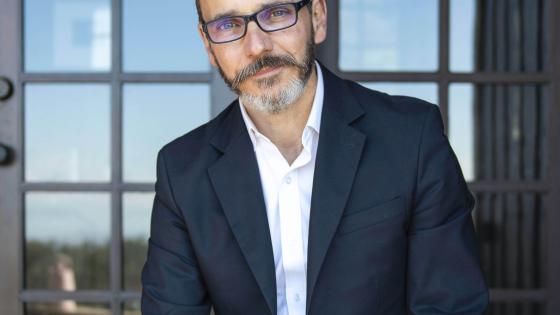Rich and poor countries alike are facing an unprecedented economic crisis as businesses close and workers lose their income due to the measures taken to contain the COVID-19 pandemic. A downturn of this magnitude can cause tremendous long-term damage and the threat is even more significant for emerging economies, where the economic costs of social distancing are likely to be higher than in rich countries with extensive social and economic safety nets.
The COVID-19 crisis has led to a sudden collapse in capital flows to emerging and developing countries. According to estimates by the Institute of International Finance, non-resident portfolio outflows from emerging market countries amounted to nearly $100 billion over a period of 45 days starting in late February 2020 (IIF 2020). For comparison, in the three months that followed the explosion of the 2008 Global Crisis, outflows were less than $20 billion.
The G20 has agreed to a debt service standstill on bilateral loans for a group of 76 low-income countries, but private creditors were not asked to participate in this standstill. Although private creditors are not very important for low-income countries, they are crucial for middle-income countries. It is pointless and unfair for the G20 to provide debt relief for developing countries if the freed resources flow immediately into the hands of hedge funds in Greenwich, Connecticut.
A standstill for middle-income countries needs to include all private creditors for both reasons of inter-creditor equity and the need to ensure adequate funding. But how can this be done without destroying the international debt market. This is the question that we address in a new CEPR Policy Insight (Bolton et al. 2020).
A novel mechanism to implement the standstill
We propose a mechanism by which the official sector coordinates such a standstill and ensures that the associated debt relief is directed towards pandemic funding. A multilateral institution such as the World Bank or other regional development banks could create for each participating country a central credit facility (CCF) allowing a country requesting temporary relief to deposit stayed interest payments for use for emergency funding to fight the pandemic. It is pure common sense that principal amortisations occurring during the standstill period should also be deferred, so that all debt servicing would be postponed.
The CCF would be monitored by the multilateral institution to ensure that the payments that otherwise would have gone to creditors are used for emergency funding related to the global pandemic. Our assumption is that all funding from this emergency facility and associated deferred principal payments would eventually be paid back to creditors.
We estimate that a 12-month debt standstill from both bilateral and private sector creditors would provide around $800 billion in resources for emerging and developing countries (ex-China), representing 4.7% of their annual income.
The basic principle is that all creditors will be asked for the same relief — a standstill on interest payments for a prescribed period, since a bespoke implementation of that request will result in choppy, inconsistent outcomes.
We suggest a streamlined approach as follows:
- The World Bank or other development banks for the region concerned would open a CCF for each country requesting this assistance. The CCF would specify the eligible crisis amelioration expenditures under the facility, as well as the arrangements for monitoring the use of proceeds.
- In view of the nature of this emergency, each CCF should have terms (interest rate and amortization) that will not aggravate the post-COVID-19 financial position of the beneficiary country.
- Once a CCF is in place for a country seeking this assistance, the debtor country would notify each of its bilateral and commercial creditors that interest payments on existing debt instruments falling due during the prescribed standstill period will be directed to (and reinvested in) the CCF.
- The threshold decision on whether to seek a standstill on interest payments for a limited period will, of course, rest in the discretion of each sovereign debtor. Some countries may be spared the worst of the pandemic and will not need this relief, while others may continue to enjoy market access during this period and would not wish to jeopardise that status by deferring current interest payments.
- Participating countries with principal amortisations falling due during the standstill period will need to defer those amounts. It would obviously be inconsistent to seek a standstill on interest amounts while simultaneously paying principal. Such deferral could be handled in one of several ways detailed in our Policy Insight.
- Some countries will have had unsustainable debt positions before the COVID-19 crisis hit, others will have unsustainable debt positions after the crisis abates. A standstill on interest payments for the rest of 2020 or slightly longer does not preclude or prejudge a more durable debt restructuring for one of these countries at the appropriate time. A CCF, in light of its origin and purpose, ought to be considered a de facto senior instrument in such a debt restructuring, the equivalent of debtor-in-possession financing in a corporate insolvency.
The doctrine of necessity
The idea for our proposal has its roots in the international law doctrine of ‘necessity’, which applies in the narrow set of circumstances where nations – through no fault of their own – need to compromise certain legal obligations in order to divert resources to meet the urgent needs of their population.
Past economic crises, whether in the US or elsewhere, have sometimes led to political interventions to suspend debt payments or to make other modifications to the terms of debt contracts. The US abrogation of the gold clauses in 1935 is a prime example. Greece in 2012 is a more modern one.
Research shows that such interventions do not automatically undermine credit markets or undermine freedom of contracting; in some instances, they have had the opposite effect, resurrecting debt markets following the intervention. The reason why debt markets recovered was that creditors had anticipated widespread default in the absence of any modification of the repayment terms, and they were pleasantly surprised by the intervention that had the effect of reducing the risk of default.1
Contracts scholars have long recognised that even the most sophisticated debt contracts are highly incomplete. Specifically, they are unlikely to contain exceptions for contingencies such as a global pandemic like COVID-19. Had such an event been contemplated ex ante, however, the contract would have specified lower debt obligations. Ex post it is easier, of course, to identify the contingency. The political intervention in debt contracts in these events serves the role of completing incomplete debt contracts. By certifying the event and by modifying the terms of the debt contract in ways that the contracting parties themselves would have wanted had they been able to, the intervention, far from undermining credit markets, helps support these markets.2
Not all interventions are beneficial in this way. It is important that they take place only in highly unusual and urgent circumstances that are outside the debtor’s control. Unusual circumstances are precisely the ones that are hard to describe and include in a debt contract. By certifying that such an event has occurred and by acting accordingly, the G20 would ensure that contract terms will be modified only when absolutely necessary and when the modifications are likely to support credit markets.
Conclusion
We propose a mechanism to implement a debt standstill for low- and middle-income countries, which would free significant resources to cover some of the most immediate costs of the COVID-19 crisis. This is a reasonable, balanced and workable approach to help stem the global health and economic crisis.
Our scheme is: (i) voluntary, as debtor countries would have an option, not an obligation, to set up a CCF; (ii) intermediated, sanctioned and monitored by a multilateral institution that insures equal treatment across creditors and oversees the allocation of funds; and (iii) covered by the doctrine of necessity in international law.
There is no more time for shilly-shallying; our scheme could be implemented immediately.
References
Bolton, P, L Buchheit, P-O Gourinchas, M Gulati, C-T Hsieh, U Panizza and B Weder di Mauro (2020), “Born Out of Necessity: A Debt Standstill for COVID-19”, CEPR Policy Insight no 103.
Bolton, P and H Rosenthal (2002) “Political Intervention in Debt Contracts”, Journal of Political Economy 110:1103-34.
Edwards, S, F A Longstaff, and A Garcia Marin (2015) “The U.S. Debt Restructuring of 1933: Consequences and Lessons,” NBER Working Paper No. 21694.
IIF – Institute of International Finance (2020), “The COVID-19 Cliff”, IIF Capital Flows Tracker, April.
Kroszner, R (2003), “Is it Better to Forgive Than to Receive? Repudiation of the Gold Indexation Clause in Long-term Debt During the Great Depression”, University of Chicago Discussion Paper.
Endnotes
1 See Kroszner (2003) and Edwards et al. (2015) on the positive effect on debt markets of the repudiation of the gold indexation clause in debt contracts during the Great Depression.
2 See Bolton and Rosenthal (2002) for an analysis of how ex post political intervention in debt contracts can be seen as a way of completing incomplete debt contracts.










